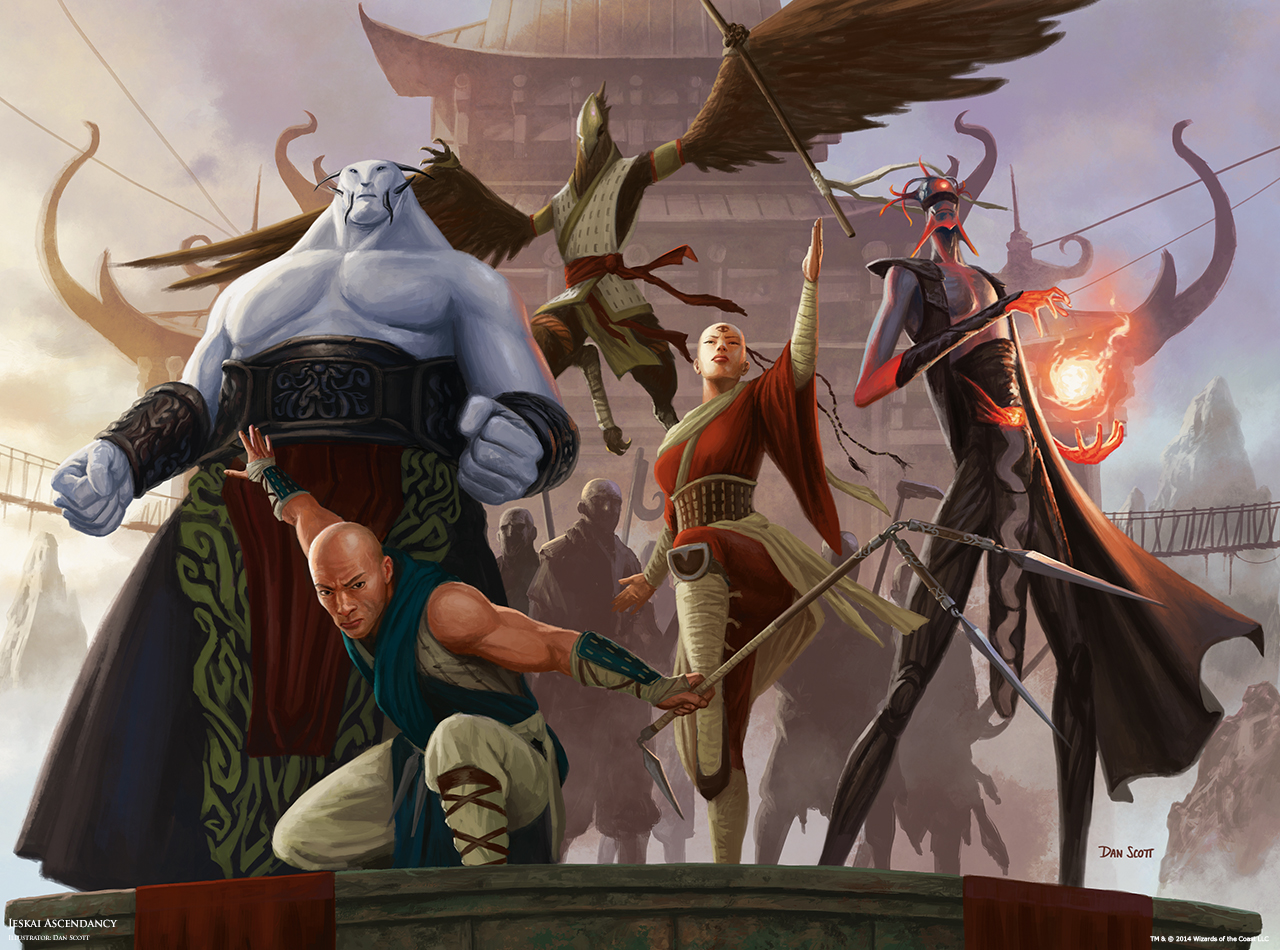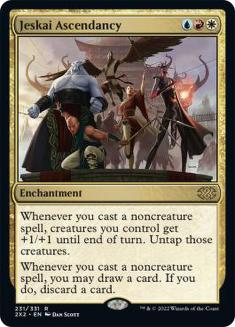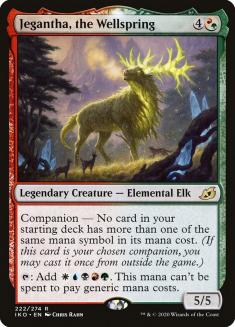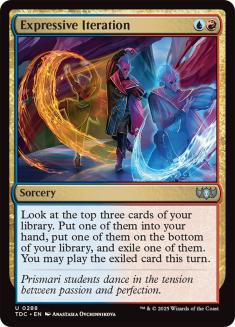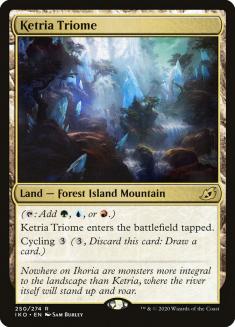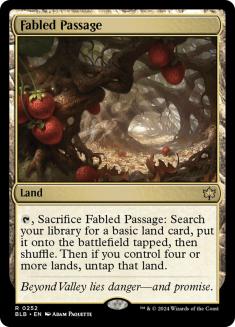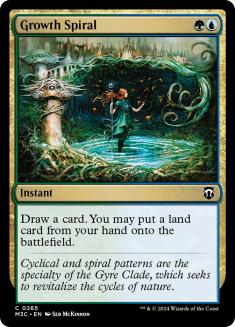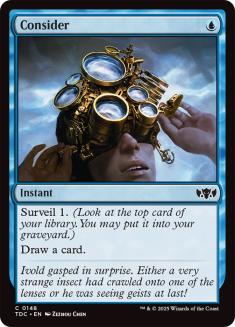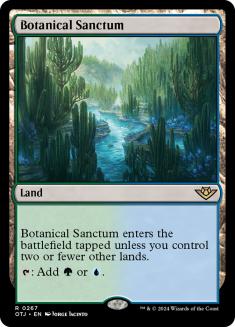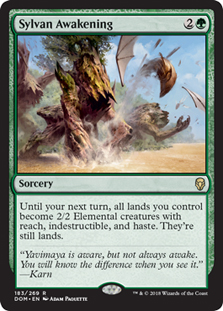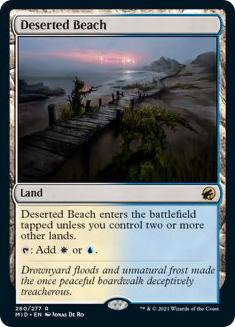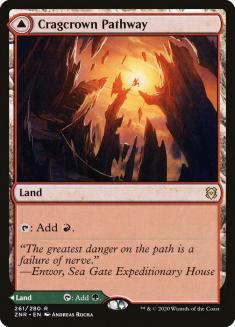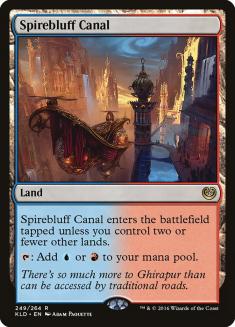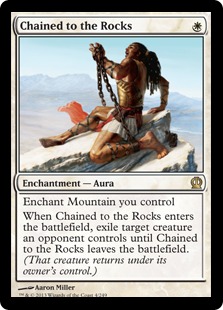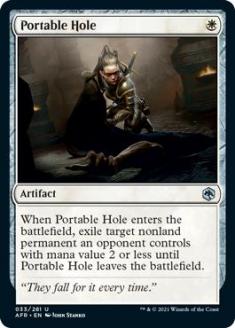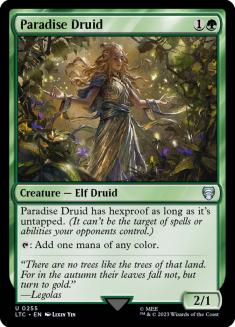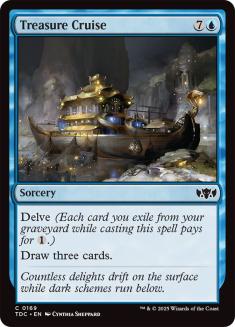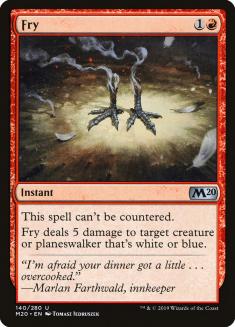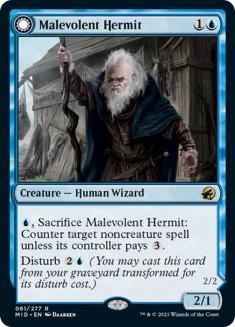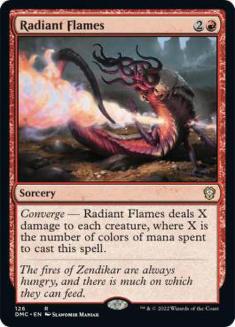Pioneer is in the ascendant. With Standard effectively dead and replaced by Alchemy, Magic’s smallest, default format (already extinct in paper) is moving in its own digital-only direction and there is a growing desire for a non-rotating paper format with a lower financial and institutional barrier than Modern.
Pioneer fits that bill perfectly. Decks are dirt-cheap in paper and online, you’re guaranteed to find a playable one that fits your playstyle, and nothing is so obnoxious or so clearly the best thing to be doing that you feel like you’re wasting your time otherwise. If you understandably swore off Pioneer when it was throttled by Dimir Inverter or infested with Uro, Titan of Nature’s Wrath and Teferi, Time Raveler like every other format, I urge you to dip your toe in again when you can. As more players get their first taste of current Pioneer, I’m confident that even more people will be declaring Pioneer their favourite format before long.
It’s easy to be biased when you’ve just had success in a format but I’ve been beating this drum for a while. Qualifying for a Set Championship was an informal goal I set myself for this year and I was thrilled to cross it off on January 2:
Creatures (6)
Planeswalkers (1)
Lands (25)
Spells (28)

Jeskai Ascendancy was the namesake and workhorse for combo decks across many formats but initially failed to live up to this pedigree in Pioneer. In part this was because it was overshadowed by more powerful linear strategies (and suffered collateral damage from the cards that were good against them), but these failed Ascendancy decks were also held back by their structural flaws. The card selection in Pioneer was too poor to find Ascendancy and a card to pair with it consistently. Without a strong backup plan, this was a one-dimensional combo deck that was slower than the competition.
Four-Color Jeskai Ascendancy (Jegantha) took Pioneer by storm a few months ago because it found ways to address both problems at once. Reigning SCG Players’ Championship winner Oliver Tomajko took the stock version of the deck to the same Top 8 and his list highlights these developments:
Creatures (7)
Lands (25)
Spells (28)
- 1 Silence
- 4 Chained to the Rocks
- 3 Treasure Cruise
- 4 Jeskai Ascendancy
- 3 Sylvan Awakening
- 4 Growth Spiral
- 1 Mystical Dispute
- 4 Expressive Iteration
- 4 Consider
Sideboard

Jegantha is usually an afterthought as a companion — you play it because you can, but you aren’t making real sacrifices for it. This deck could be labelled Four-Color Jeskai Ascendancy (Jegantha!) — it’s the first deck that gives Magic’s most colourful Elk the love it deserves. Jegantha is the ideal mana creature for Jeskai Ascendancy and gives you a card to loot away to it when you are high on mana but low on cards. Casting a vanilla 5/5 comes up surprisingly often too!
Expressive Iteration was as revolutionary in Pioneer as in every other format but wasn’t fully appreciated at first. Izzet Phoenix had risen from the ashes to become the best deck before Strixhaven and already had too many options for card draw and card selection (with the usual diminishing returns that apply to those), so it wasn’t immediately obvious that Iteration would find a place there, but it soon earned permanent tenure.
Iteration is unique and essential for Four-Color Jeskai Ascendancy. It’s the ideal setup card in the early turns, a source of card advantage for a deck that wants spare cardboard to throw away, and it lets you chain multiple spells on your big Ascendancy turn. Go Blank is popular as a hate card for Izzet Phoenix and is usually accompanied by other disruption like Thoughtseize; Iteration gives you the card quality and quantity to stay afloat in those fights. It never feels good to cast Iteration as Anticipate on Turn 2, but it can be correct when you need to combo quickly.
The main plan for many decks, Omnath, Locus of Creation seemed like the perfect backup plan for Four-Color Jeskai Ascendancy — and that may be underselling it. For the group that introduced the deck to Pioneer a few months ago, Omnath was the main attraction; the Ascendancy package just happened to be the best way to fill out the deck. Omnath can dominate games by itself or act as an ideal distraction while you set up the Ascendancy combo. Even if it is removed, you usually got back at least one useful thing from that exchange. Expressive Iteration complements Omnath nicely, giving you a way to use extra mana without having to play cards even higher up the curve that are clunky when you don’t have Omnath.
Omnath is one of the most egregious and ridiculous cards printed in years. It was a centerpiece of the original version of Four-Color Jeskai Ascendancy. It was also the card holding the deck back and cutting it from the maindeck was the key to my success.
To understand why, we have to look at Omnath in a broader context. The argument for Omnath — that it demands different answers from your main plan and always offers a resource of some kind — is more suited to sideboard games, which tend to be slower and more interactive as both players get to trade their dead cards for relevant ones. The possibility of an alternate threat like Omnath forces a tough choice — keep in otherwise dead removal to hedge your bets or risk being caught off-guard by this new plan.
This tradeoff doesn’t exist in Game 1. Cards like Fatal Push or Lightning Axe that were in the opponent’s deck regardless now have a purpose. One of the strengths of this style of combo deck is ignoring most of the common interaction in the format and creatures like Omnath (or the Faeburrow Elders I had) give that up. If you can stick Omnath, its impact is often minimal — the aggressive decks in Pioneer care more about battlefield presence than raw damage and can overwhelm incremental lifegain from Omnath given enough time. Even the red decks that Omnath tends to prey on have tools like Rampaging Ferocidon; Chandra, Torch of Defiance; or Roiling Vortex that line up well against it.
If Omnath isn’t winning games by itself, its main use is bridging you towards an eventual combo turn — something you can achieve directly by maximizing the redundancy on your combo and your access to card selection.
Removing Omnath has a cascading effect on other card choices that improves the deck further.
Fabled Passage is required to unlock the full power of Omnath but comes at a steep cost — you already have a lot of lands that enter the battlefield tapped in the early turns and basic lands are weak given your strict mana requirements. You want cheap spells to power Jeskai Ascendancy and Treasure Cruise, but mangling your manabase to support Omnath stops you from casting these early.
Omnath also encourages you to play Growth Spiral, which is somewhat awkward as your abundance of cantrips incentivizes you to lower your land count to avoid flooding and free up room for your action spells. With this many tapped lands, casting Growth Spiral on Turn 2 in the first place isn’t trivial.
Lifting these constraints opens up a world of possibilities for the deck. You get to play the full pack of eight one-mana cantrips with a cleaner manabase, reducing the deck’s fail rate.
The Sylvan Awakening count reflects this change of direction. Rather than a superficially flexible deck that eventually gets around to comboing off, this new take on Four-Color Jeskai Ascendancy is a dedicated combo deck that aims to follow up Turn 3 Ascendancy with Turn 4 Awakening + a one-drop to go off that turn as often as possible. Opt replacing Growth Spiral gives you at least twelve one-drops, making these lines more consistent and conveniently upgrading your Expressive Iterations. You sometimes want to hold a castable one-drop rather than using your mana efficiently now so that you can combo off immediately once you have the main pieces.
After making these changes largely to improve the deck’s mana I ended up with a manabase that was hastily improvised, to put it mildly. With more time to work this out, we can try to satisfy the competing mana requirements of the deck:
- You want all of your lands to help cast Jeskai Ascendancy and ideally Expressive Iteration. This means that lands that can only produce green (notably Pathways if you have to use them for green) are risky and Temple Garden / Sunpetal Grove (appealing as they bridge the non-overlapping colours of Ketria and Raugrin Triome) are only acceptable in small quantities.
- Each land cycle (Triomes, shocklands, Pathways, fastlands, checklands, slowlands) has its own diminishing returns and specific requirements. For example, Hinterland Harbor boxes out the other cycles that don’t have its basic land types.
- You need enough ways to cast Opt and Consider on Turn 1, which in turn give you more looks at your other colours so it makes sense to bias towards blue sources. Similarly, being able to cast Sylvan Caryatid (and Paradise Druid in some lists) can answer other mana woes as long as you have green up front.
- You’d prefer not to play a basic land, but Field of Ruin becomes terrifying if you don’t and the blue control matchups are already hard enough.
Chained to the Rocks places its own demands on your manabase and escaping these was why I moved to Portable Hole. Portable Hole has some important noncreature targets (Deafening Silence) and a range of miscellaneous ones, but there are more expensive creatures that only Chained can deal with (crucially Archon of Emeria / Eidolon of Rhetoric and Spell Queller, but also generally strong hits like Arclight Phoenix and Mayhem Devil). Against the aggressive decks like Boros Heroic that have become popular this week, you want both. I believe the mana can support Chained to the Rocks without Fabled Passage, and it’s worth trying the more ambitious manabase before reassessing later.
Here’s where I’d look next, with a more refined but still imperfect manabase:
Creatures (5)
Lands (25)
Spells (30)

The format is already shifting to react to these combo decks with more Pioneer events in the near future, so some new foes may emerge. Here’s how I’d prepare against the most popular decks right now:
VS Izzet Phoenix
Out:
In:
Silence is more appealing against versions with the Galvanic Iteration + Temporal Trespass combo — these lists usually lack Treasure Cruise, so seeing that card gives you useful information. Narset, Parter of Veils is their scariest sideboard card, so do your best to make sure you have counterplay there; Paradise Druid may be worth keeping in partly as another source of pressure against Narset.
VS Four-Color Jeskai Ascendancy (Jegantha) and Lotus Field Combo
Out:
In:
Lotus Field Combo didn’t take the title but had a fantastic weekend, capitalizing on the same metagame trends as Four-Color Jeskai Ascendancy. Since then aggressive red decks have come back in force, a bigger problem for Lotus Field than Ascendancy, which is faster on average and has more room for interaction against Eidolon of the Great Revel. This speed gives you the edge against Lotus Field pre-sideboard and this space lets you load up on sideboard cards to make the matchup even stronger. The expiration date on Mystical Dispute and Malevolent Hermit and the inevitability of cards like Thought Distortion or Niv-Mizzet, Parun mean that you can’t be too reactive here.
VS Mono-Red Aggro
Out:
In:
VS Naya Winota
Out:
In:
Note the lack of Omnath against Naya Winota. It can buy some time but is easily overwhelmed by as little as a single Esika’s Chariot.
VS Azorius Control (Kaheera)
Out:
In:
With this configuration, the control matchups post-sideboard are where you place the least emphasis on the combo. Your main plan isn’t reliable against them and you don’t have the tools to transform into an aggro-control deck. With careful timing, though, you can sometimes find a window to exploit their inherent clunkiness.
VS Jund Food
Out:
In:
You don’t need or want to sideboard much. You’re heavily favoured and this deck’s success the week before this Qualifier was one reason combo dominated here.
VS Orzhov Vampires
Out:
In:
This deck was an obvious beneficiary of Innistrad: Crimson Vow with Edgar, Charmed Groom tempting you into white. White also offers a strong anti-combo card in Deafening Silence, the most compelling reason for Portable Hole. Their average draws aren’t fast or disruptive enough to pose a real threat, so don’t let Deafening Silence catch you off-guard.
Four-Color Jeskai Ascendancy is a classically powerful combo deck that can easily outrace or ignore most of its competition. Even with a newfound target on its head, it’s hard to ask for much more in a wide-open format that I’m excited for everyone to rediscover.

